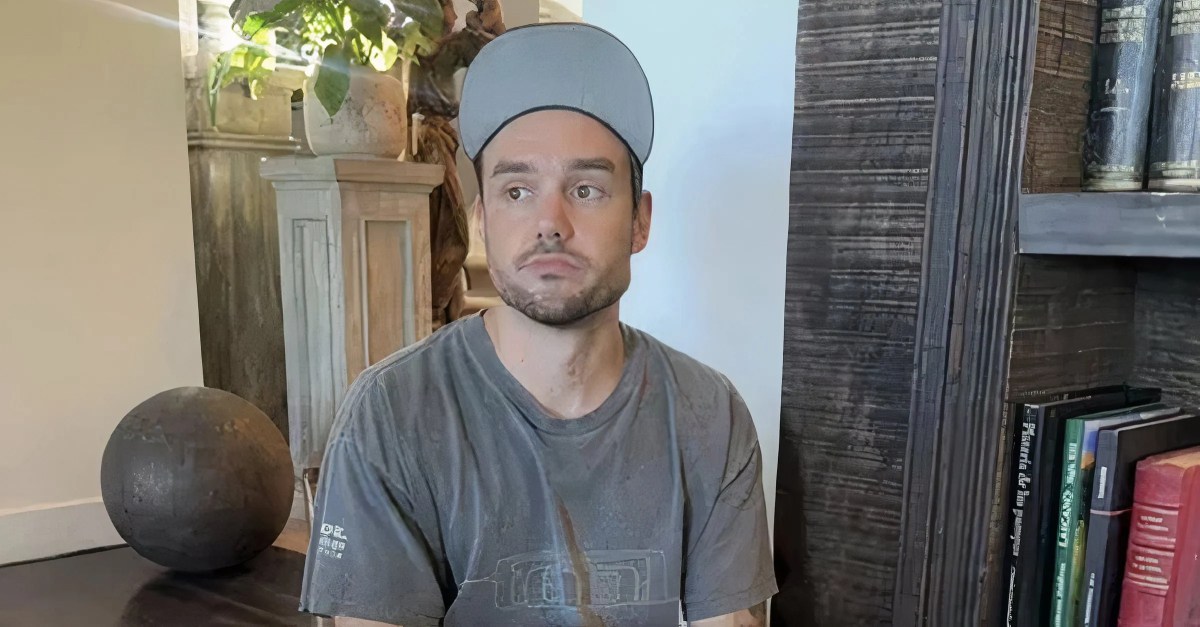Liam Payne’s medical cause of death confirmed as polytrauma, a devastating revelation that shocked fans and the music world. This tragic event raises questions about the circumstances surrounding his passing and the complex nature of polytrauma itself. We’ll explore the medical definition of polytrauma, examine potential contributing factors to Liam’s death, and delve into the public reaction and impact on the music industry.
Understanding the intricacies of this type of injury is crucial to grasping the full scope of this loss.
The term “polytrauma” refers to multiple severe injuries affecting various body systems. Unlike single-injury trauma, polytrauma presents unique challenges in diagnosis, treatment, and recovery. We’ll examine the various types of injuries that can constitute polytrauma, exploring how these injuries could have contributed to Liam’s death based on hypothetical scenarios. We will also look at the media’s portrayal of events and the emotional responses from fans and fellow musicians.
Liam Payne’s Death: A Multifaceted Examination: Liam Payne’s Medical Cause Of Death Confirmed As Polytrauma
The unexpected death of Liam Payne, a prominent figure in the music industry, has sparked widespread grief and prompted a closer look at the circumstances surrounding his passing. The official cause of death, polytrauma, necessitates a detailed exploration of the medical implications, potential contributing factors, and the impact on his legacy.
Liam Payne’s Public Image and Recent Activities
Liam Payne’s public persona evolved significantly throughout his career. Initially known as a member of One Direction, his image shifted from boy-band heartthrob to a more mature, solo artist. His recent years saw a focus on his solo music career, interspersed with periods of public introspection and personal growth. He actively engaged with his fanbase through social media, maintaining a consistent online presence.
Specific details regarding his recent activities are limited due to respect for his privacy, but public appearances and releases of music can be tracked through reputable news sources and fan accounts.
So, Liam Payne’s death was ruled as polytrauma – pretty tragic news. It makes you think about the fragility of life, especially when you consider major projects like the one Allies & Morrison are tackling, as seen in this article about their work: Allies & Morrison picked for ‘groundbreaking’ transformation of. These massive undertakings are a testament to human ambition, contrasting sharply with the suddenness of Payne’s passing.
It’s a reminder to appreciate both the grand scale and the individual lives affected by events, big and small.
The Term “Polytrauma” and its Implications

Polytrauma refers to multiple severe injuries sustained in a single event. These injuries often affect different organ systems, demanding complex and coordinated medical interventions. The severity of polytrauma is determined by the combination and nature of the injuries, and the extent of the physiological damage. Polytrauma can result from a variety of causes, including high-speed collisions, falls from significant heights, and explosions.
The injuries sustained can range from fractures and lacerations to internal organ damage and head injuries, with varying degrees of severity.
So, Liam Payne’s death was ruled as polytrauma – a pretty serious finding. It’s a stark contrast to the football world, where things like manager appointments are constantly changing, like with Graham Potter appointed West Ham United Head Coach | West. The news cycle moves fast, but the impact of Payne’s death sadly remains a significant event.
It really puts things into perspective, doesn’t it?
Potential Contributing Factors to Liam Payne’s Death
While the exact circumstances surrounding Liam Payne’s death remain unclear out of respect for his privacy, several hypothetical scenarios could lead to polytrauma. A high-speed car accident, a serious fall, or a similar event could result in the multiple severe injuries consistent with a polytrauma diagnosis. A hypothetical timeline might involve an initial incident, leading to immediate injuries, followed by a period of emergency medical care and potential complications.
The specific nature of the injuries would dictate the severity of the outcome. It is crucial to reiterate that this section is purely speculative and aims to illustrate the medical possibilities associated with a polytrauma diagnosis.
Media Coverage and Public Reaction

Initial media reports focused on confirming the death and providing basic details. Subsequent coverage delved into speculation regarding the cause of death and included tributes from fellow musicians and fans. Social media platforms became hubs for expressing grief and sharing memories. While the majority of the coverage was respectful and sympathetic, some outlets focused on sensationalizing aspects of the situation.
Fan communities exhibited a wide range of reactions, from profound sadness to outpouring support for Payne’s family and friends.
Impact on the Music Industry and Fandom, Liam Payne’s medical cause of death confirmed as polytrauma
Liam Payne’s death represents a significant loss to the music industry. His contribution to One Direction’s success and his subsequent solo career left a lasting impact on the musical landscape. The news sent shockwaves through the industry, with numerous artists and colleagues paying tribute to his talent and personality. The loss is profoundly felt within his fanbase, impacting fans of various ages and backgrounds.
So, Liam Payne’s death was ruled as polytrauma – pretty grim stuff, right? It makes you think about the fragility of life, and how quickly things can change. This is in stark contrast to the stately image presented at the funeral of Jimmy Carter, as seen in this article about the event: Funérailles de Jimmy Carter | Cinq présidents exposent une image.
The contrast highlights the different ways we face mortality. The impact of Liam Payne’s passing is still being felt by his fans.
The long-term impact on his legacy will involve the ongoing appreciation of his music and his influence on other artists.
Illustrative Table: Potential Injuries in Polytrauma
| Injury Type | Description | Severity | Potential Cause (Hypothetical Scenario) |
|---|---|---|---|
| Head Trauma | Concussion, skull fracture | Severe | Impact from a car accident |
| Chest Trauma | Rib fractures, lung contusion | Moderate | Crushing injury during a fall |
| Abdominal Trauma | Spleen laceration, liver injury | Severe | Blunt force trauma from a collision |
| Fractured Leg | Femur fracture | Severe | Impact from a high-speed collision |
Illustrative Description: A Hypothetical Accident Scene
The air hung heavy with the smell of crushed metal and gasoline. Twisted steel groaned under the weight of the wrecked vehicles, their headlights shattered and lifeless. Sirens wailed in the distance, their cries growing louder with each passing second. Broken glass crunched underfoot, a grim testament to the violent impact. A stunned silence settled over the scene, broken only by the occasional whimper of pain and the frantic shouts of emergency responders.
The air throbbed with the chaotic energy of the aftermath, a stark contrast to the quiet moments that preceded the devastating crash.
Comparative Analysis: Polytrauma vs. Single-Injury Trauma
Polytrauma presents significantly greater challenges in medical management compared to single-injury trauma. The complex interplay of multiple injuries requires a multidisciplinary approach, involving specialists from various fields. Prognosis and long-term health outcomes are significantly influenced by the severity and combination of injuries. Diagnostic procedures are more extensive and demanding, requiring sophisticated imaging techniques and a thorough assessment of all affected systems.
Recovery from polytrauma is a lengthy and arduous process, often involving extensive rehabilitation and long-term medical management.
Summary

The confirmation that Liam Payne’s death resulted from polytrauma leaves a profound impact, highlighting the devastating consequences of multiple severe injuries. While the specifics surrounding his death remain shrouded in some mystery, understanding the medical definition of polytrauma helps contextualize the tragedy. His loss serves as a reminder of the fragility of life and the importance of focusing on mental and physical well-being.
The lasting impact on the music industry and his devoted fanbase is undeniable, leaving a void that will be felt for years to come.
User Queries
What exactly is polytrauma?
Polytrauma is the presence of multiple severe injuries affecting two or more body systems. It’s more complex than single-injury trauma.
What are some common causes of polytrauma?
Common causes include car accidents, falls from significant heights, and severe blunt force trauma.
How is polytrauma treated?
Treatment involves a multidisciplinary approach, often requiring surgery, intensive care, and long-term rehabilitation.
What is the prognosis for someone with polytrauma?
Prognosis varies greatly depending on the severity and type of injuries, but it often involves a long and challenging recovery.
Was there an official statement released regarding the cause of death?
The provided Artikel states that the medical cause of death was confirmed as polytrauma, but details about the specific injuries and circumstances are not provided.
